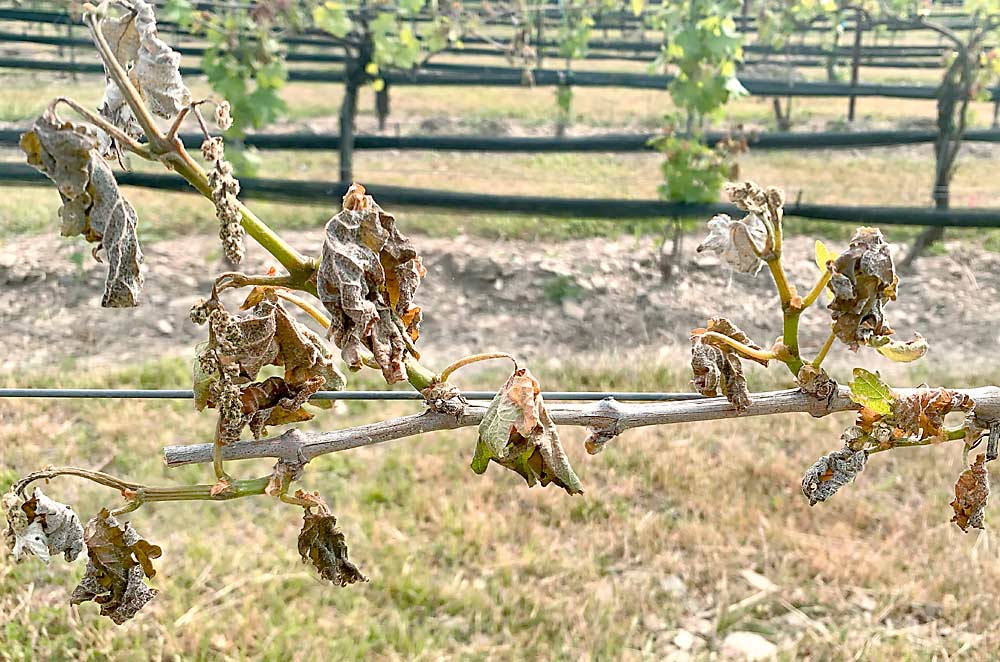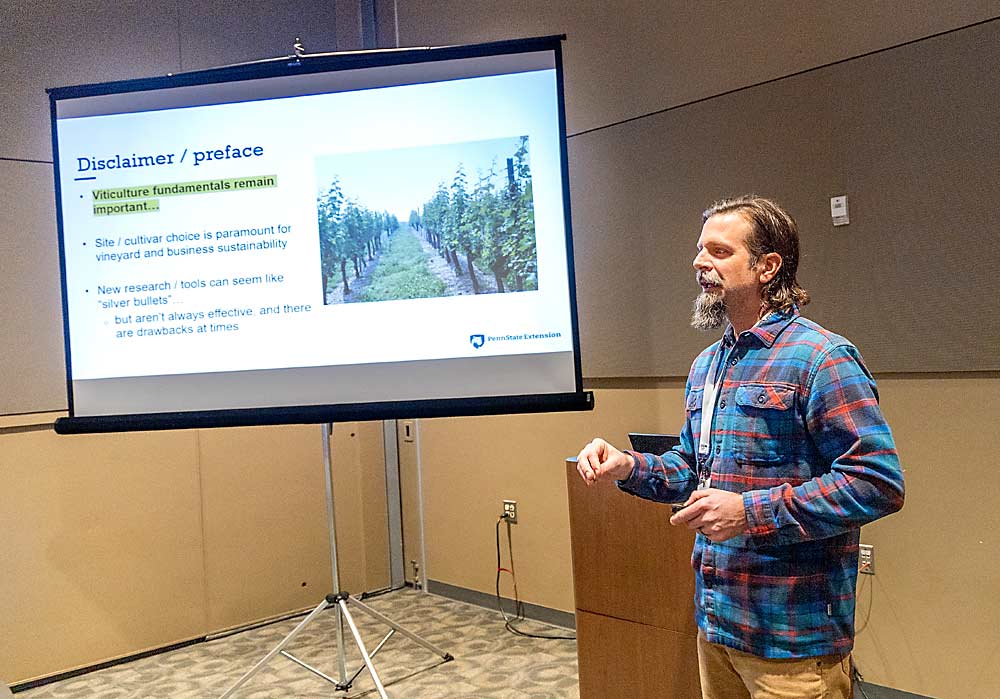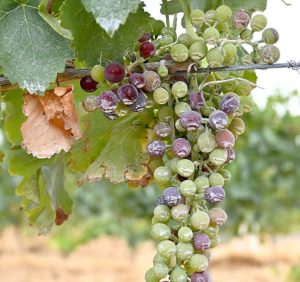
As weather patterns become more dynamic and unpredictable, the risk of spring frost and freeze injury to grapevines is increasing. Moderate temperatures in late winter and early spring often result in early bud break. But as final frost dates do not appear to be changing, this leaves a longer window for cold temperature to damage sensitive grapevine tissues coming out of winter dormancy, which can decrease crop yield.
Cain Hickey, Penn State assistant teaching professor of viticulture, discussed spring freeze mitigation strategies in vineyards during the Great Lakes Fruit, Vegetable, and Farm Market EXPO in Grand Rapids, Michigan, in December.
Hickey, who works primarily with Pennsylvania wine grape growers, said spring cold injury protection begins with site and cultivar selection.
“Choosing the right site and starting with the right cultivars to match on that site is paramount,” Hickey said. “You’re off to a great start toward having good frost protection if you start there.”
He emphasized the importance of higher relative elevation when choosing vineyard sites.
“You don’t want to plant your vineyard at the bottom of a hill,” he told the EXPO audience.

Sloped, convex landforms help move cold air away from your vines. One drawback of highly sloped sites, however, is that they might require greater labor and other inputs due to the nature of working on uneven land. Mechanization can be challenging on steep slopes.
Growers often ask if they should plant vines on a south-facing slope.
“South-facing can be good for ripening fruit and lengthening the growing season, but the drawback is that it could also hasten bud break and increase your chance of spring frost/freeze damage,” he said. “When considering aspect, I recommend you do what makes sense for your vineyard design, layout and tractor safety.”
Cultivar choice can greatly affect spring freeze damage risk, too. Cultivars vary in their relative bud break dates. Chardonnay and Cabernet Franc, for example, break early, but Cabernet Sauvignon breaks later. He said Marquette and other cold-hardy cultivars from Minnesota also tend to break buds early.
Vineyard and winery production goals also drive site selection and growers’ frost risk tolerance.
“In certain cases, it may be judicious to aim for wine production goals that can be achieved on a perennial basis, given the variability in weather patterns and limitations of the climate in which you grow grapes,” Hickey said.
Once you’ve made your site and cultivar selections, there are multiple spring freeze mitigation strategies to choose from: active strategies (those that modify the vineyard microclimate) such as heaters, candles, sprinkler systems and wind machines; and passive strategies (those that do not modify the microclimate) such as pruning, training and applying chemical products.
Growers must weigh the pros and cons of each strategy and identify which make the most sense for their situation. Some strategies might not need to be implemented across entire vineyards but only in areas where cold injury risk is particularly high, Hickey said.
Delayed pruning is one possible strategy to help mitigate spring cold-damage risk. Delayed pruning can help reduce spring cold injury by delaying bud break until the threat of subfreezing temperatures has passed, but it can reduce yield, delay ripening and add to labor demands. He recommended trialing delayed pruning strategies in small, freeze-prone areas of the vineyard.
—by Matt Milkovich







Leave A Comment